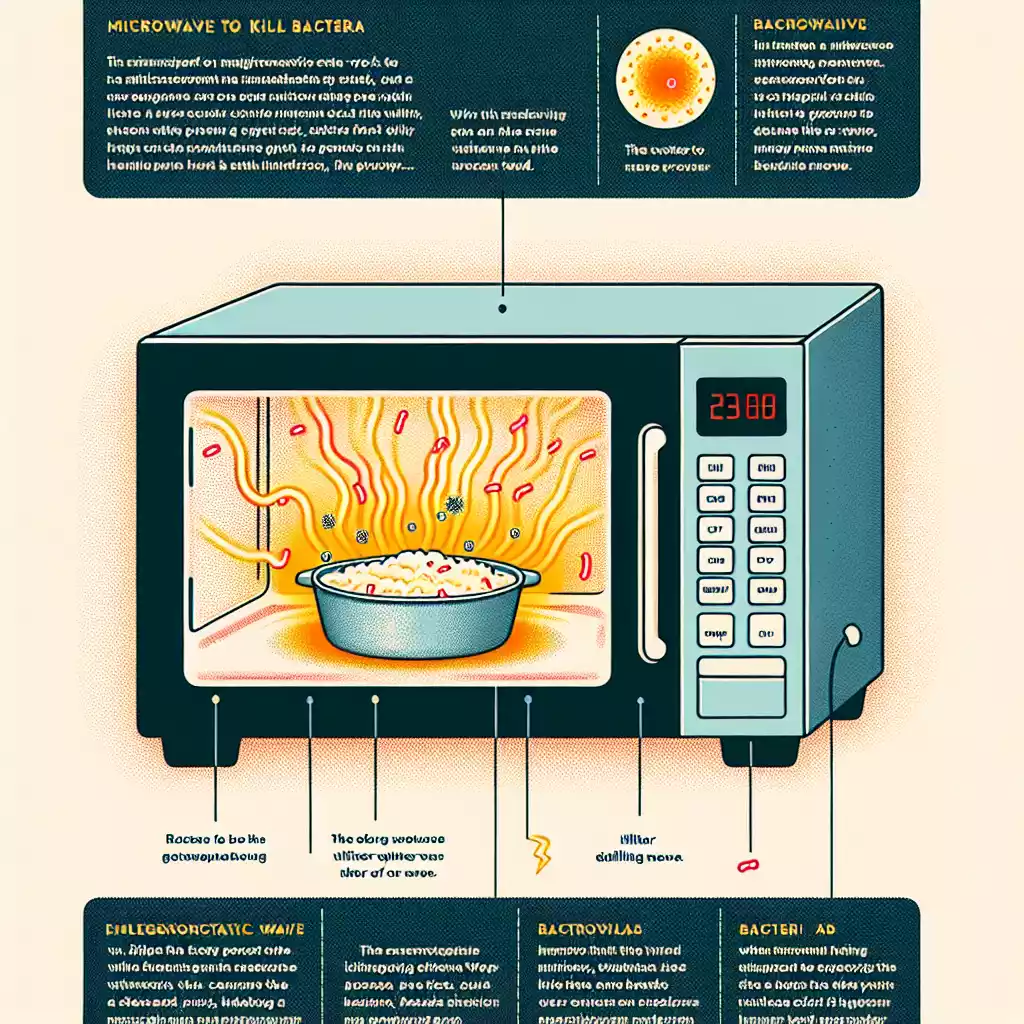Introduction to Microwave Technology
Microwaves have become a staple in kitchens worldwide, offering convenience and speed in heating food. But can these handy appliances also ensure your food is safe from harmful bacteria? This question often arises among those who rely on microwaves for daily meal preparation. Understanding how microwaves work and their impact on bacteria can provide clarity.
Microwave ovens were invented in the 1940s, with Percy Spencer accidentally discovering the heating effect of microwave radiation. Since then, microwaves have evolved significantly, becoming more efficient and user-friendly. They operate by emitting microwave radiation, which excites water molecules in food, generating heat. This process is quick and efficient, but its effectiveness in killing bacteria depends on several factors.
Understanding Bacteria and Food Safety
Common Types of Bacteria Found in Food
Food can harbor various bacteria, some of which are harmful to humans. Common culprits include:
• Salmonella: Often found in raw poultry and eggs.
• E. coli: Present in undercooked beef and contaminated produce.
• Listeria: Can be found in deli meats and unpasteurized dairy products.
The Importance of Food Safety
Bacterial contamination poses significant health risks, leading to foodborne illnesses. Ensuring food safety involves proper handling, cooking, and storage practices. Microwaving food correctly can be part of this safety protocol, but it’s essential to understand its limitations and capabilities.
Microwaves and Their Effect on Bacteria

Heat Generation in Microwaves
Microwaves generate heat by causing water molecules in food to vibrate, producing thermal energy. This heat can kill bacteria if it reaches a sufficient temperature. However, the distribution of heat can be uneven, potentially leaving some bacteria alive.
Temperature Thresholds for Killing Bacteria
Different bacteria have varying heat resistance levels. Generally, most harmful bacteria are killed at temperatures above 165°F (74°C). Ensuring that food reaches this temperature throughout is crucial for safety.
Factors Affecting Bacterial Elimination in Microwaves
Food Composition and Density
The type and density of food impact how evenly it heats in a microwave. Dense foods or those with uneven composition may not heat uniformly, leaving cold spots where bacteria can survive.
Microwave Power and Duration
The power setting and cooking duration significantly influence bacterial elimination. Higher power settings and longer cooking times increase the likelihood of killing bacteria. However, overcooking can affect food quality.
Microwave Safety Practices
Proper Microwave Use
Using a microwave correctly involves:
• Stirring and rotating food: Helps distribute heat evenly.
• Covering food: Retains moisture and ensures even cooking.
Using Microwave-Safe Containers
Not all containers are suitable for microwave use. Using the right materials prevents harmful chemicals from leaching into food. Microwave-safe options include:
• Glass
• Ceramic
• Certain plastics (labeled microwave-safe)
Common Myths and Misconceptions
Myth: Microwaves Cook Food Unevenly
While microwaves can cook unevenly, this issue can be mitigated by stirring, rotating, and covering food. Ensuring these practices helps achieve uniform heating.
Myth: Microwaves Cause Food to Become Radioactive
Microwave radiation is non-ionizing, meaning it doesn’t make food radioactive. The radiation only causes water molecules to vibrate, generating heat.
Alternatives to Microwaving for Bacterial Elimination
Conventional Oven Heating
Oven heating provides more uniform heat distribution compared to microwaves. It can be more effective in ensuring food reaches the necessary temperature to kill bacteria.
Boiling and Steaming
Boiling and steaming are effective methods for killing bacteria, especially for foods like vegetables and seafood. These methods ensure even heat distribution and thorough cooking.
Scientific Studies and Findings
Research on Microwaves and Bacteria
Studies have shown that microwaves can effectively kill bacteria if food is heated to the right temperature. However, uneven heating remains a concern.
Expert Opinions
Food safety experts recommend using microwaves with caution, ensuring food is heated evenly and reaches the necessary temperature to kill bacteria.
Practical Tips for Using Microwaves Safely
Ensuring Even Heating
To ensure even heating:
• Stir food halfway through cooking.
• Use microwave-safe covers to retain moisture and distribute heat.
Cleaning and Maintenance
Keeping your microwave clean prevents cross-contamination. Regularly wiping down the interior and exterior with a mild detergent is essential.
FAQs
FAQ 1: Can microwaves kill all types of bacteria?
Microwaves can kill most bacteria if the food reaches a temperature of 165°F (74°C) throughout. However, uneven heating can leave some bacteria alive.
FAQ 2: How long should I microwave food to ensure it’s safe?
The duration depends on the food type and microwave power. Generally, heating until the internal temperature reaches 165°F (74°C) is recommended.
FAQ 3: Is it safe to microwave raw meat?
Microwaving raw meat is safe if it is cooked thoroughly. Ensure it reaches an internal temperature of 165°F (74°C) to kill harmful bacteria.
FAQ 4: Can microwaving food cause nutrient loss?
Microwaving can cause some nutrient loss, but it is comparable to other cooking methods. Using shorter cooking times and lower power settings can minimize nutrient loss.
FAQ 5: What are the signs that food is properly heated in a microwave?
Properly heated food should be steaming hot throughout, with no cold spots. Using a food thermometer to check the internal temperature is the best way to ensure safety.
Conclusion
Understanding how microwaves affect bacteria and implementing proper practices can make microwave cooking safe and effective. Ensuring food reaches the necessary temperature, using microwave-safe containers, and following safety guidelines are crucial steps. While microwaves offer convenience, being aware of their limitations and using them correctly ensures your food is both delicious and safe.
—
Relevant Data Table
| Type of Bacteria | Temperature Required to Kill | Commonly Found In |
|---|---|---|
| Salmonella | 165°F (74°C) | Poultry, Eggs |
| E. coli | 160°F (71°C) | Beef, Produce |
| Listeria | 165°F (74°C) | Deli Meats, Dairy |
By following these guidelines and understanding the science behind microwave cooking, you can ensure your meals are both safe and enjoyable.

